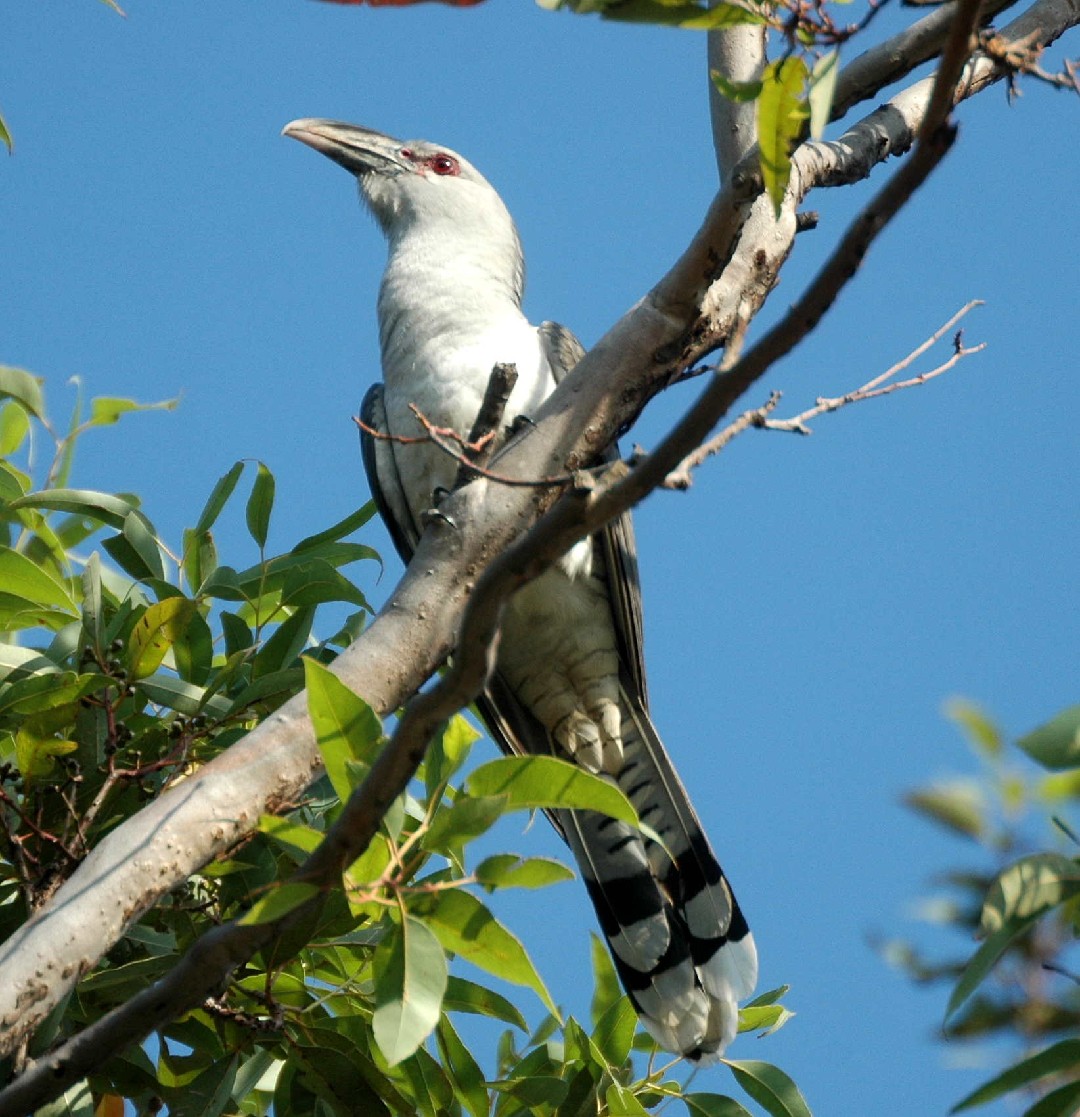Channel-billed Cuckoo
A species of Channel-billed Cuckoo Scientific name : Scythrops novaehollandiae Genus : Channel-billed Cuckoo
Channel-billed Cuckoo, A species of Channel-billed Cuckoo
Botanical name: Scythrops novaehollandiae
Genus: Channel-billed Cuckoo
Content
Description People often ask General Info
 Photo By Aviceda , used under CC-BY-SA-3.0 /Cropped and compressed from original
Photo By Aviceda , used under CC-BY-SA-3.0 /Cropped and compressed from original Description
The world's largest cuckoo, the channel-billed cuckoo measures between 56–70 cm (22–28 in) long, with a 88–107 cm (35–42 in) wingspan, and weighing between 560–935 g (1.235–2.061 lb). 24 adults were found to have averaged 684 g (1.508 lb) in body mass. The bill is bi-coloured, with a grey base becoming straw-coloured at the tip. The bill is large slightly curved and reminiscent of the bills of hornbills; in fact, the bird is sometimes erroneously referred to as a hornbill. The plumage of the adult is pale grey on the head, chest, belly and back, becoming paler and barred lower down on the belly. The wings are darker grey with dark tips on the feathers. The tail is dark grey on top and barred underneath with a black band and white tip at the end. The feet and legs are black, and the eye is surrounded by prominent red skin. While most other very large cuckoos are rather terrestrial (i.e. roadrunners or the genus Neomorphus), the channel-billed cuckoo is fairly arboreal and is capable both in trees and on the ground. The channel-billed cuckoo is a strong flier, with a distinctive, almost hawk-like cross-shaped (cruciform) flight silhouette. There is some sexual dimorphism in both plumage and dimensions, the female having a smaller bill and paler, more barred undersides. The juvenile is similar to the adult but has pale tips to the feathers of the wings, and the rest of the plumage is buff instead of pale grey. The bill is less massive and dirty pink in colour, and the skin around the eye is not red. 
Size
58-66 cm (23-26 in)
Nest Placement
Tree
Feeding Habits
Channel-billed Cuckoo predominantly consumes various fruits, especially figs and those from Loranthaceae trees, and occasionally eats insects, bird eggs, and nestlings. They forage in canopies, often with other frugivores, and display unique fruit-based dietary preferences for a cuckoo.
Habitat
Channel-billed Cuckoo typically dwell in open woodlands that feature tall trees, especially those belonging to the genus Ficus, lining the forest edges or riverbanks. They are common in subhumid to semi-arid regions and occasionally settle on coastal islands. These birds favor lowland habitats extending inland from mangrove belts, though their presence is sporadic and less dense in arid zones. Geographically, channel-billed Cuckoo inhabit broader areas encompassing northern and eastern Australia, New Guinea, and various islands of eastern Indonesia.
Dite type
Frugivorous
People often ask
General Info
Feeding Habits
Bird food type

Fruit
Bird Feeder Type

Platform
Behavior
The channel-billed cuckoo is often shy, remaining hidden in tree canopies feeding on fruit and most active in early morning and evening. Its loud raucous call makes it more often heard than seen. Other birds such as crows harass and chase it when they encounter it. 
Distribution Area
The channel-billed cuckoo has a widespread distribution across northern and eastern Australia, New Guinea, the Bismarck Archipelago, and the islands of eastern Indonesia as far west as Sulawesi. The species is a permanent resident in the Bismarck Archipelago, Flores and Sulawesi. Elsewhere within its range it is migratory. Birds breeding in Australia range from north eastern Western Australia through the Northern Territory and Queensland down into eastern New South Wales as far as Sydney. In recent years, the breeding range of these cuckoos appears to have extended further down the south coast of NSW. A few stragglers reach the eastern tip of Victoria, but are not thought to breed there. Vagrant birds have reached New Zealand and New Caledonia. After the breeding season, in March and April, birds breeding in Australia begin to migrate northwards to their wintering grounds in New Guinea and Indonesia. Birds breeding in New South Wales begin leaving earlier, in February and March. The migration route is across the Torres Strait, travelling individually or in small groups. From New Guinea they migrate across the nearby islands as far as Timor and the Moluccas. It is not known if the species breeds in New Guinea, as some birds are present there all year. Migrating channel-billed cuckoos begin to return to Australia in August and September. 
Species Status
Not globally threatened.
Scientific Classification
Phylum
Chordates Class
Birds Order
Cuckoos and Relatives Family
Cuckoos Genus
Channel-billed Cuckoo Species
Channel-billed Cuckoo